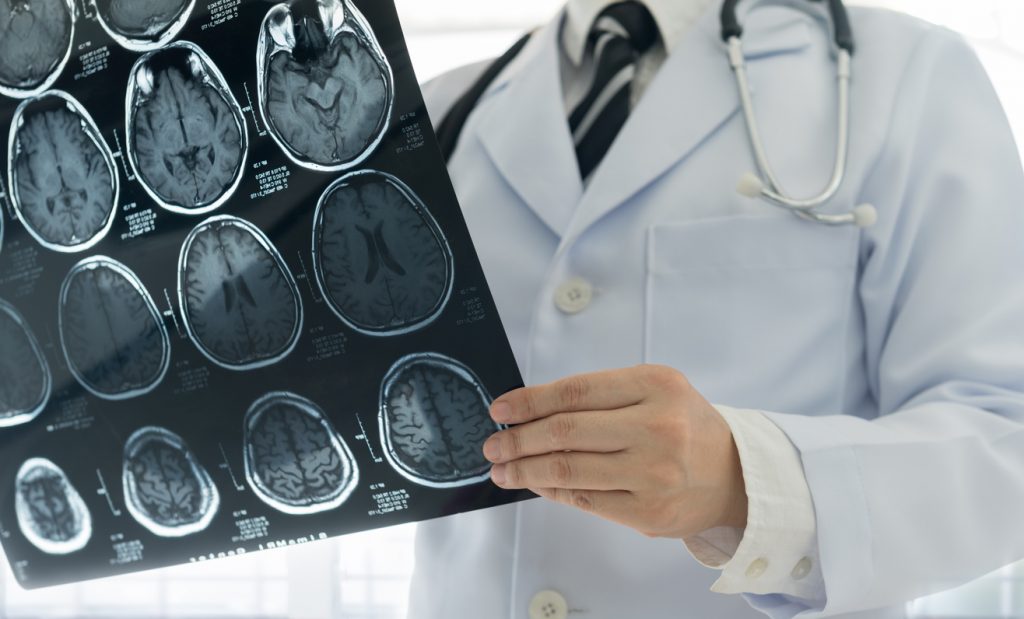Video transcript
A number of trials of DBS [deep brain stimulation] have occurred for almost two decades now. It is considered the standard of care in most Parkinson’s centres. We would recommend DBS if best medical therapy has failed. By that we mean an experienced Parkinson’s specialist has adjusted medications and people are still struggling.
Initially when deep brain stimulation came in in the 90s, the patient population targeted was the more advanced, the most disabled. Often we were doing it too late. Moving forward there has been studies, such as the early-stim study, suggesting that even as early as six years, as soon as people start to have these fluctuations, that’s when quality of life is falling off, and that some people should have it early. You take the individual and look at them.
If they are having significant fluctuations, they’re underachieving or underperforming relative to their stage in life. It’s different for a 40-year-old person with a family who is the breadwinner, versus a 70-year-old retiree who is trying to enjoy retirement. So you take all that into account.
Having said that, if people are having motor fluctuations we know that we can help them with deep brain stimulation. We know that best medical therapy still sees a quality of life drop off year by year. And we know that with deep brain stimulation, we see a massive improvement in quality of life with successful DBS. So we don’t want to hold back on people knowing that we can offer that.
Book your health appointments online
Find and instantly book your next health appointment with Healthengine
Who is eligible for DBS?
Not all patients with Parkinson’s disease are suitable for deep brain stimulation. The criteria is that patients respond to dopamine treatment and that their main disability is relieved by levodopa. By that we mean that if they have issues with balance or chronic pain or something else, or one of the main symptoms is not relieved by levodopa, such as freezing, then we will be able to tell them that deep brain stimulation will not improve those symptoms.
We tell patients that DBS can mimic your best response to dopamine medication. It can’t do better. The only exception to that rule is that if you have tremor which is resistant to levodopa, DBS will be better at controlling that tremor than medications.
The other group of patients that shouldn’t have DBS are those that are cognitively frail. Parkinson’s and normal ageing can cause a degree of cognitive impairment. If people are below average threshold on that scale, then DBS can actually worsen it, by the stress of surgery itself or the actual stimulation disrupting certain networks.
The third group of patients that aren’t suitable for DBS are those with obvious surgical issues, so you know, bleeding problems or other major medical problems that would make undergoing the surgery itself too risky. It is possible to operate on people who are on long term anticoagulants if that is managed properly. But there are some patients where it is simply too risky.
What is involved in DBS surgery?
Just to take you through the process of DBS surgery itself. The patient has consented for surgery, they’re given an approximate risk of injury to the brain due to the probe causing bleeding of the order of 1% – in reality it is probably less. And the risks of general surgery.
On the day of surgery they come in, unmedicated, so generally quite uncomfortable in the off state. Myself and the neurosurgeon are present, with the anaesthetist who is critical. Most of the operation is done under general anaesthesia or twilight anaesthesia. So you are not awake. And that includes for the placement of a device called a stereotactic head frame which is pinned to the head. That’s how we obtain millimetre accuracy. This frame cannot move so it needs to be pinned to the head, so that’s done under anaesthesia.
There is then a scan taken with the frame on, which is merged with a preoperative MRI scan, so we can find the target in the brain. Then small, what are called burr holes, are made by the surgeon with the drill. Then the recording equipment is set up on the frame.
At that point it is preferable to have the patient awake, to record from the brain area that we’re targeting. We can pass a tiny micro-electrode through the brain without harming it, through the target and record the signal, depending on where we are, which nucleus. And we like to see a good length of recording through that target. If we do see that, then we go on and do further testing with stimulation.
If we don’t see that nice pattern, then we might need to do another run through the brain with that recording electrode. We want to minimise the number of passes of any probe through the brain because that potentially increases the risk of bleeding in the brain, so we tend to do no more than three passes.
Once that recording is found we then pass a test probe into that area. This is the other reason I tell patients, “Look, it’s possible to do it asleep, but if you’re awake, it’s more reassuring. We can turn the stimulator on. If you have tremor or stiffness or slowness we can actually look for those symptoms to disappear on the table while we’re stimulating. The surgeon or I are moving the probe through the area to find the sweet spot for improvement in those symptoms.
What we also want to see is the symptoms going away before side effects start to appear. So we will gradually increase the stimulator voltage. We always look for side effects because that helps us know where we are in the target. If we see side effects at voltages up here and symptoms disappear down here, that’s a comforting thing to see. Then we will implant the permanent electrode in that location and the patient will then go off to sleep.
It varies but they might be awake for anything from 30 to 60 minutes. The whole procedure itself takes five or six hours and that includes tunnelling electrodes behind the ear, down to the pacemaker box, with most people implanted in the pectoral muscle.
So after surgery, patients wake up with clips in their scalp. Some neurosurgeons do not shave the head, there is a little cut along the line of the wires here and a little bulge in the chest here. In some people it’s not visible. It obviously depends. If you’re a thin person you can actually see it like a cardiac pacemaker. But it’s by no means disfiguring. And you can’t see the electrodes on the scalp.
Why do I need to be awake for DBS surgery?
One of the common questions is, “Why do I need to be awake? I’m not sure if I can tolerate that.”
This is where the anaesthetist is critical. We can give people medications to relax them. When they’re woken up they are rarely distressed and in some cases surprisingly interactive. They’re not in any pain. And that’s the key thing I tell people: You will not wake up in distress. If on those rare occasions someone is distressed, we’ll simply put them back to sleep.
Like I said, it’s possible to record from this area of the brain in asleep people, it’s just not possible to do the clinical testing. So once people here that they’re quite reassured.
One of the other processes that we have at our centre that is critical, is the prospective DBS patient will always talk to at least one or two previous deep brain stimulation patients to get that individual perspective and just ask any kind of question from the patient perspective that they might want answered.
Video kindly featuring:
Dr Julian Rodrigues MBBS FRACP; Consultant Neurologist at Hollywood Medical Centre, and Editorial Advisory Board Member of the Virtual Neuro Centre.
All content and media on the HealthEngine Blog is created and published online for informational purposes only. It is not intended to be a substitute for professional medical advice and should not be relied on as health or personal advice. Always seek the guidance of your doctor or other qualified health professional with any questions you may have regarding your health or a medical condition. Never disregard the advice of a medical professional, or delay in seeking it because of something you have read on this Website. If you think you may have a medical emergency, call your doctor, go to the nearest hospital emergency department, or call the emergency services immediately.







